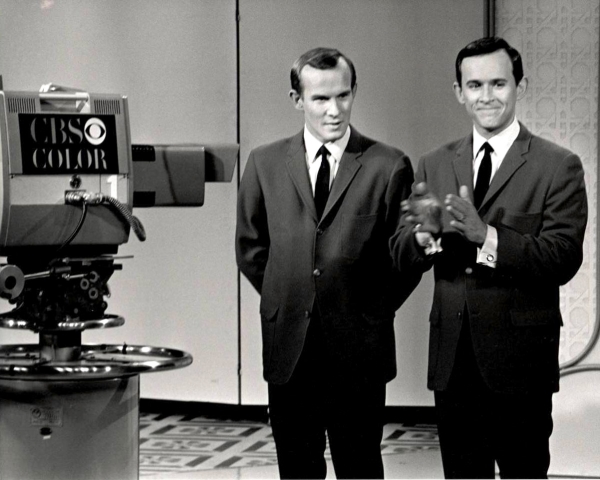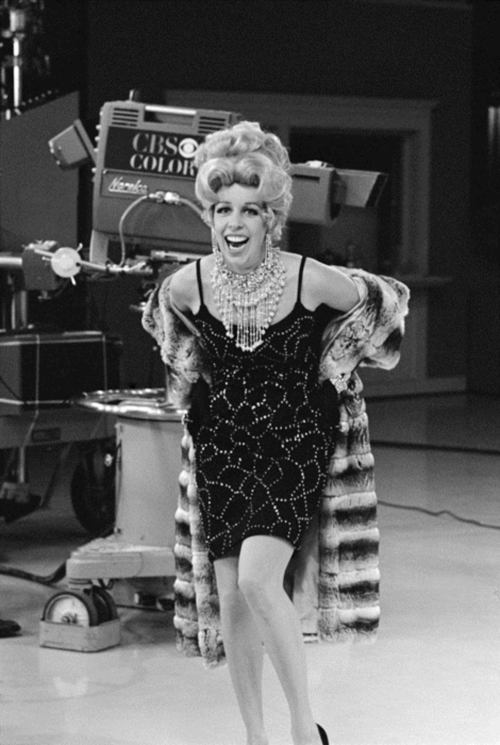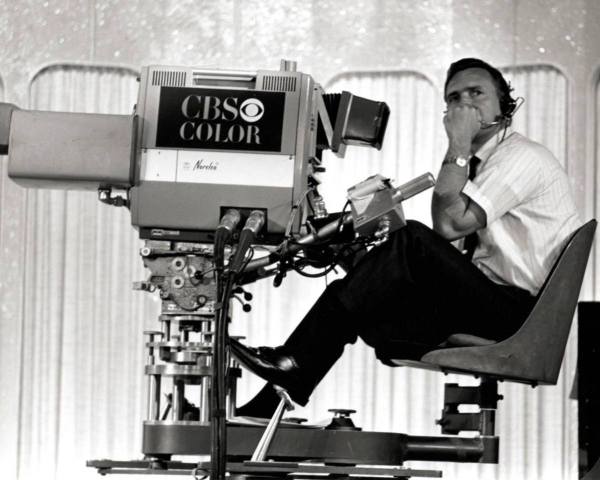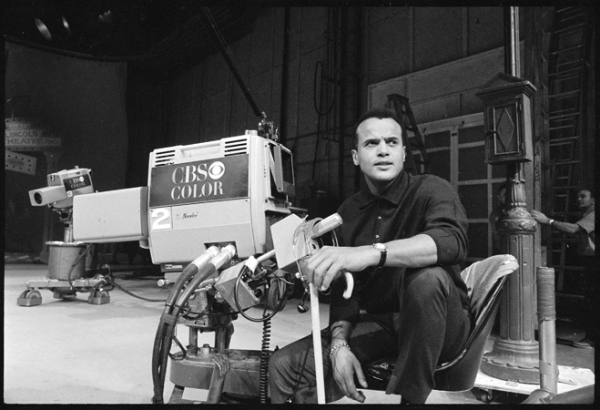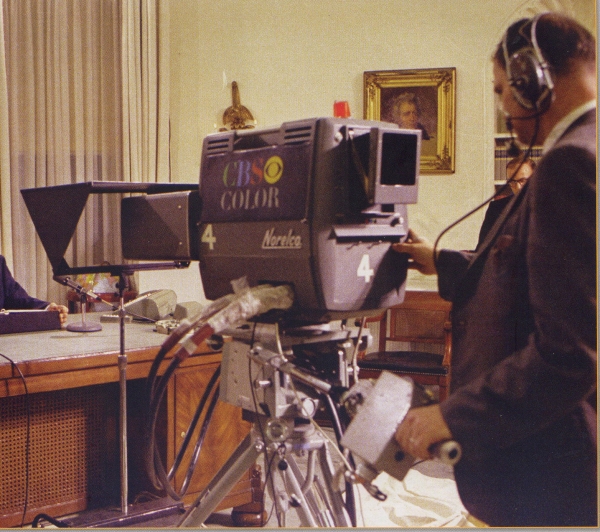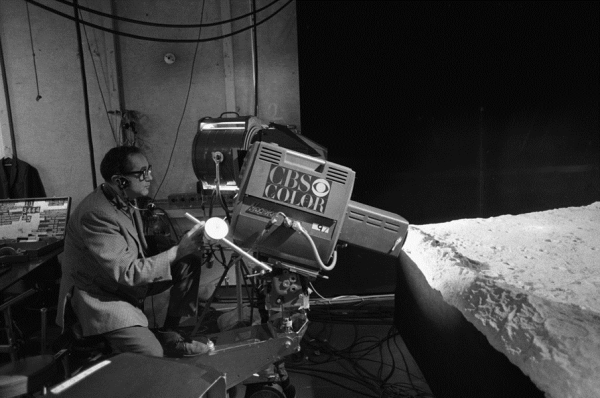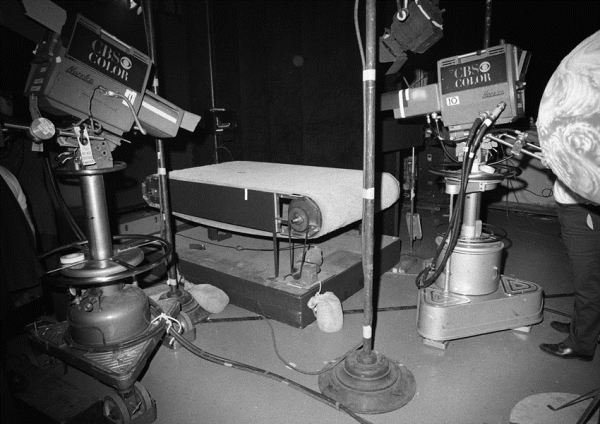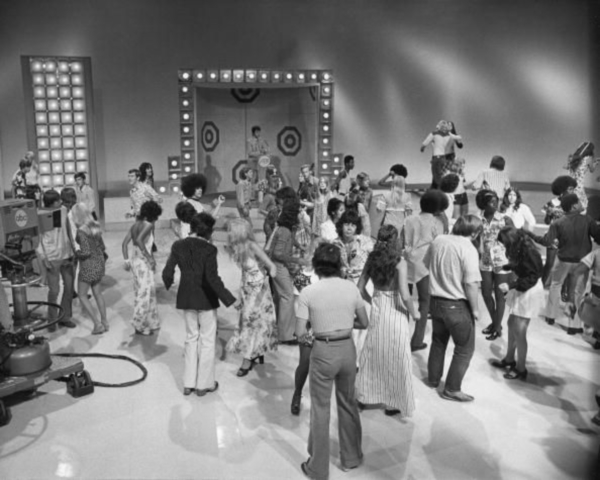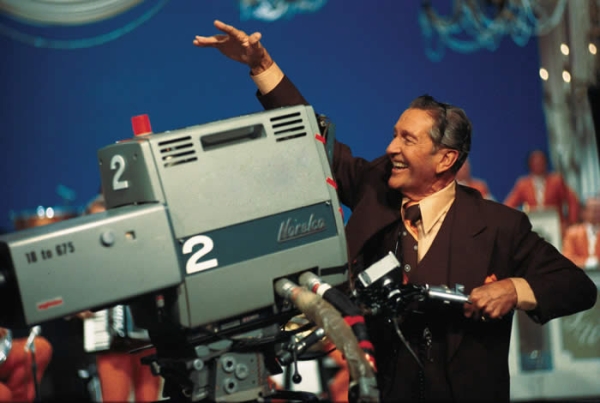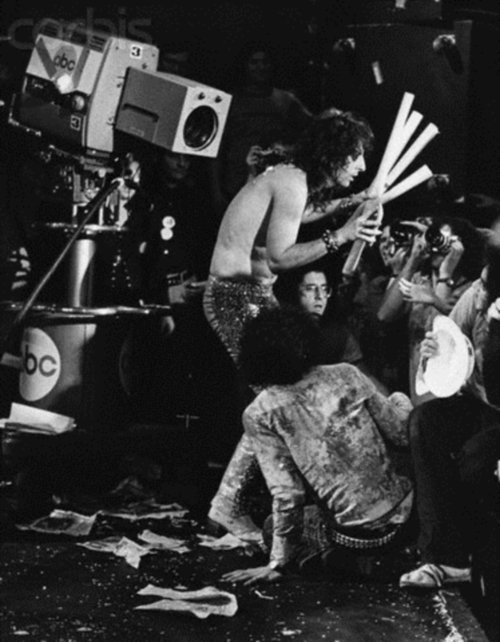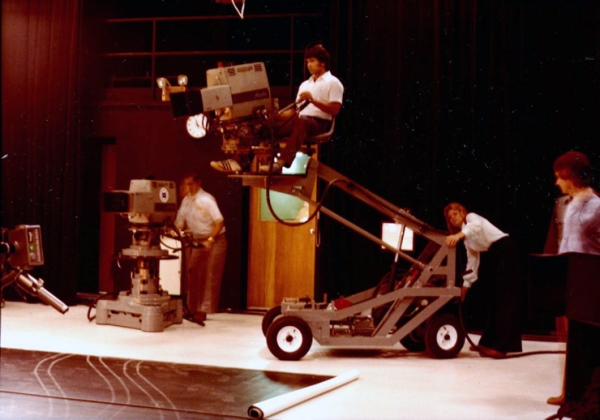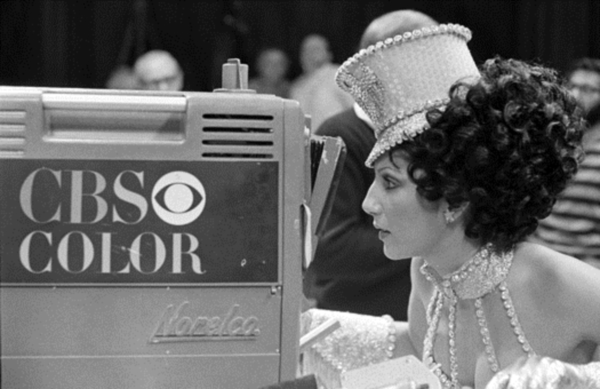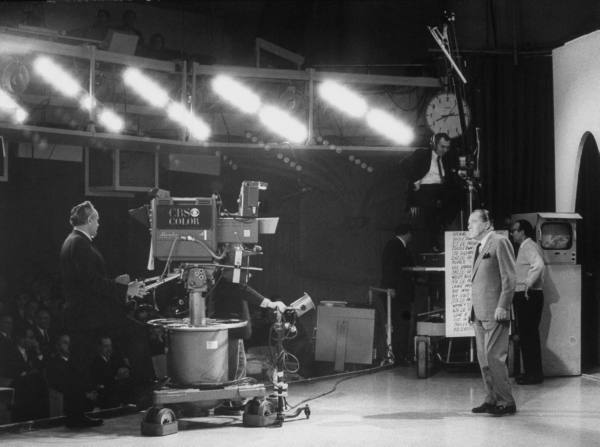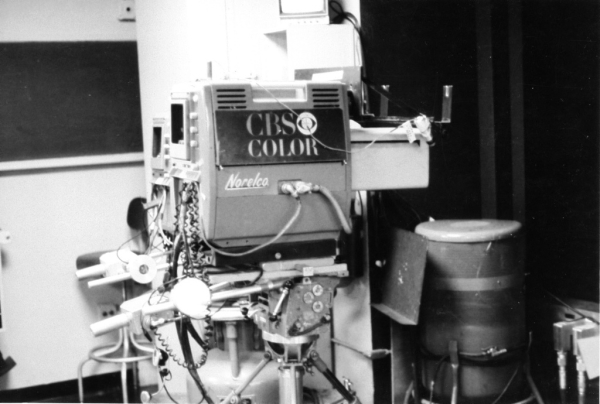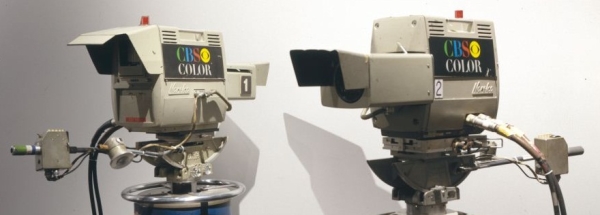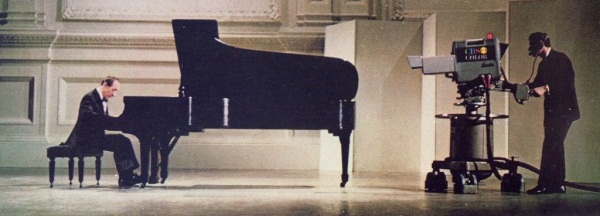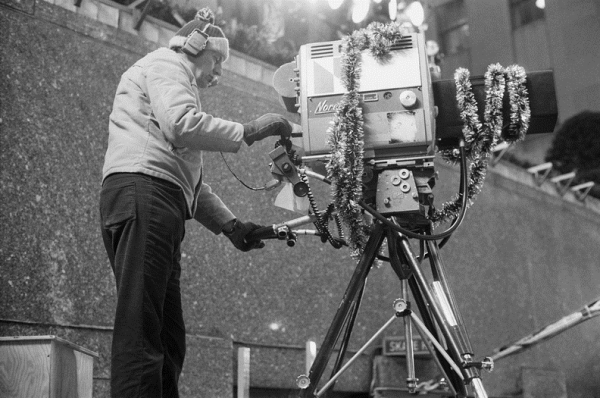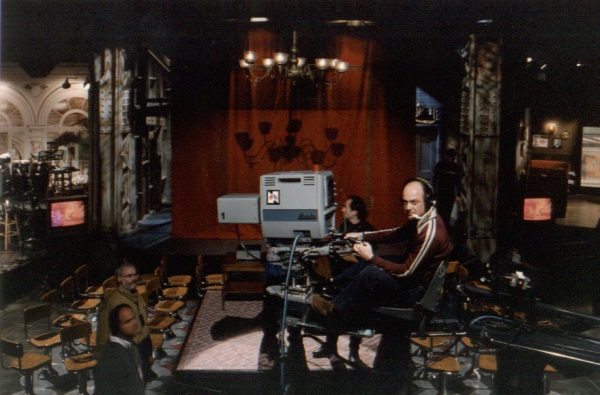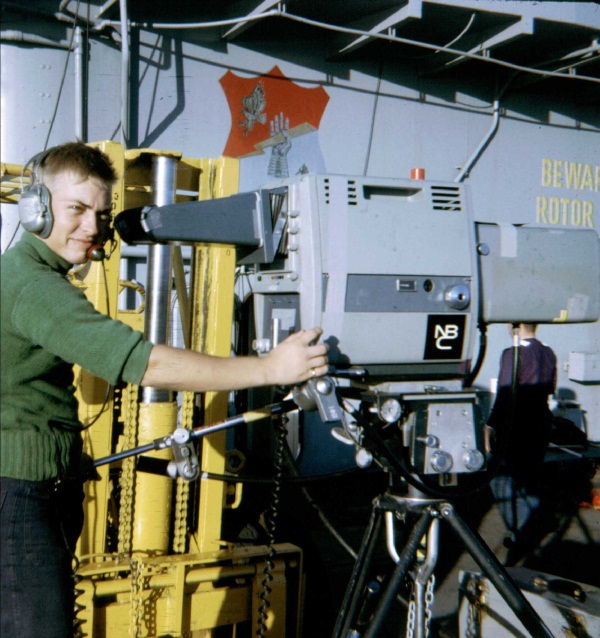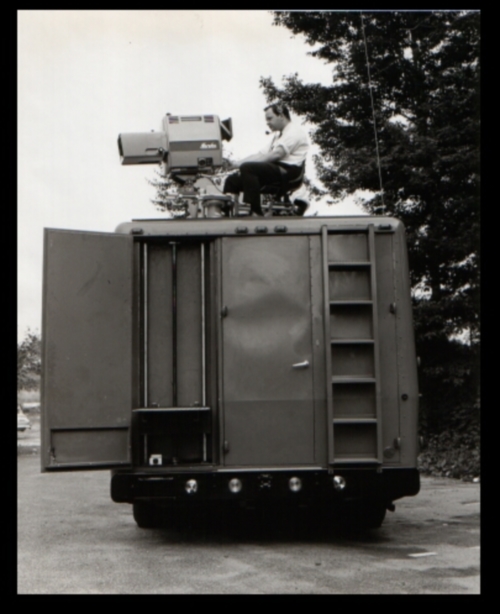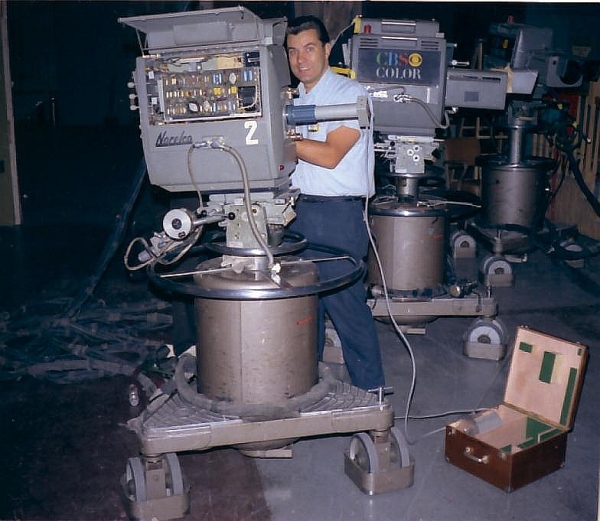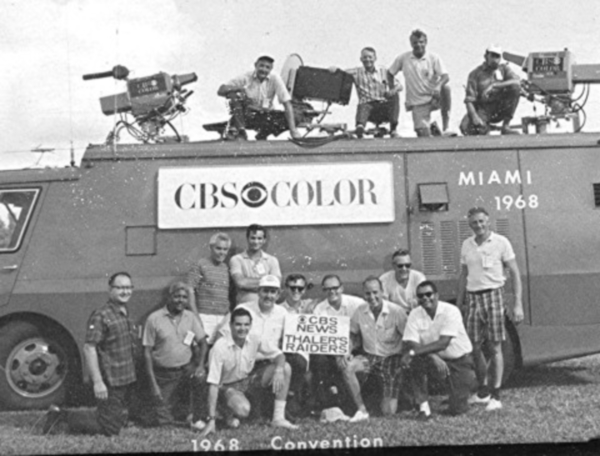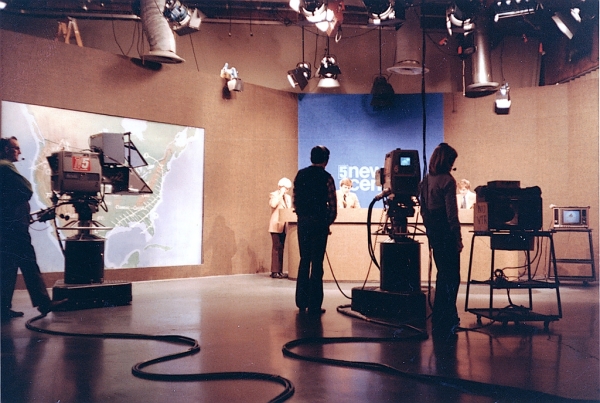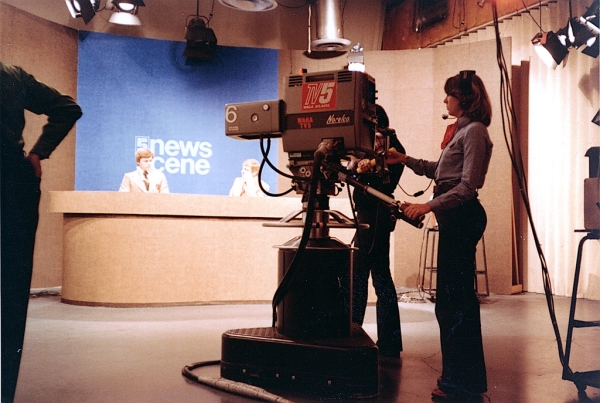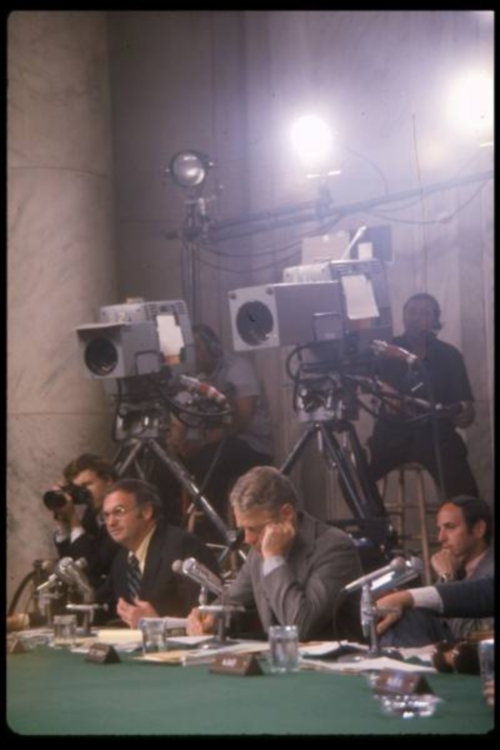HOME | CAMERAS | STUDIOS | ARCHIVES | COLLECTIONS | GALLERY | LIVESTREAM | GUESTBOOK | ABOUT
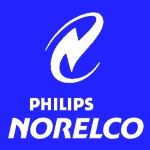

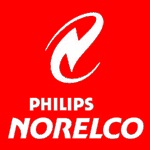
|
The Norelco Television Cameras |
In the early 1960s, a new broadcast camera featuring the new Plumbicon tube was being developed by the Philips Company in Holland. It was called the Norelco PC-60, and it made its American debut in 1964. The "PC" designation stood for "Plumbicon Camera."
In America the name "Norelco" conjures up images of electric shavers, not necessarily television cameras. The name came about after Philco, claiming the brand names were too similar, was able to legally prevent Philips from using the brand name "Philips" on products marketed in the United States. Philips developed the brand name "Norelco" as a portmanteau of "North American [Electronics] Company." (Philips got the last laugh when it purchased Philco in 1981.)
Although the name Philips wasn't very familiar in the United States, the company had a huge worldwide reputation. Philips and Company started in 1891 as a manufacturer of carbon filament lamps, then branched into making radio tubes, receivers and transmitters in the 1920s. The company also conducted experiments in mechanical television late in the decade.
I'll bet you knew about Philips' development of the first-ever dry shaver (in the 1950s), but I'll bet you didn't know the audio cassette tape (1963), the first home video cassette recorder (1972), and even the compact disc (1980) were also Philips innovations.
But one particular invention is of interest to us here: the Plumbicon tube, developed by Philips in 1960. This tube, which promised true color fidelity, was manufactured by Philips subsidiary Amperex Electronics in Slaterville, Rhode Island. Philips designed a color television camera around the new plumbicon tube, and this camera reached the market in 1964 as the PC-60. The plumbicon tube earned Philips an Emmy in 1967 for "Outstanding Achievement in Engineering Development."
The PC-60 was followed by the PC-70, the PC-72, the portable PCP-70 and PCP-90, and the LDH series. (Later efforts included the BTS brand name, in a joint venture with Bosch, which was later sold to Thomson's Grass Valley and became the LDK brand.)
The PC-60 and PC-70 series were very popular cameras, and all the major networks and countless local stations used them. However, perhaps the most well-known customer was CBS, which eagerly bought Norelcos in its effort to become a color network. Why did CBS love the Norelco cameras so well? Because finally a color camera was available that was not manufactured by RCA. Remember, RCA's "compatible color" system beat out the CBS mechanical color system, and there was still some resentment at CBS. The availability of a color camera that wasn't an RCA product made it possible for CBS to hasten its transition to color, and Norelco cameras with their "CBS Color" signage became a familiar background sight on many a television program in the 1960s and 1970s.
As it happened, NBC also liked the Norelco cameras well enough to buy 35 of them. RCA also incorporated the plumbicon tube in the TK-44 series of cameras. In fact, there's a couple of great stories about the battles at RCA/NBC over the Norelcos, the plumbicon tube, and how the TK-44 came to be. Read here for the NBC story, and read here to learn how Norelco inadvertently helped RCA develop its TK-44.
I hope you enjoy the stories and all the great images below.
|
|
I hope you'll appreciate the pictures above and below as much as I do. It took me two years and much effort to finally acquire these iconic images.
Image courtesy of the CBS Photo Archive. All rights reserved. This image cannot be archived, sold, leased or shared. To me, The Smothers Brothers Comedy Hour (February 1967-April 1969) and The Carol Burnett Show (September 1967-March 1978) represent one of the greatest eras ever in the history of both CBS and of television itself. Carol Burnett usually did her program from Television City's Studio 33, while the Smothers Brothers did their program from Studios 31 and 41. So did Glen Campbell's program, and so did Sonny & Cher's show. (For much more on CBS Television City, click here for a special story in our Gallery.) Behind Tom and Dick is a new 1967-era Norelco PC-60. Compare it to the one in the September 16, 1967 photo of Carol Burnett. See the difference? In the Burnett picture, the camera has been painted CBS Gray, as was directed by network president Dr. Frank Stanton. The picture with the Smothers Brothers shows a camera that hasn't yet been painted. (Also notice the other differences between the two - among them, numerous vertical ventilation slots on the camera Tom and Dick are near, while the one behind Carol Burnett has fewer but much larger horizontal slots.) Both cameras are equipped with Angeneiux 10x full servo lenses, and are mounted on Vinten Mark III tilt heads atop TVP pedestals. Many thanks to George Sunga (former producer for the Smothers Brothers and Three's Company), Maureen Muldaur (of muldaurmedia.com), and the Smothers Brothers' Knave Productions for help in acquiring the Smothers Brothers images above and below.
Here's another shot from the same day on the Smothers Brothers set, showing a yet-unpainted PC-60 on a Chapman crane. Both images were used in the documentary Smothered: The Censorship Struggles of the Smothers Brothers Comedy Hour. I thank its producer, Maureen Muldaur, for her help and her brilliant production.
Image courtesy of the CBS Photo Archive. All rights reserved. This image cannot be archived, sold, leased or shared. Here's Harry Belafonte on the set of "The Strollin' Twenties" at CBS New York on November 30, 1965. This PC-60 is on a Chapman crane.
Image courtesy of the CBS Photo Archive. All rights reserved. This image cannot be archived, sold, leased or shared. In the Oval Office, a PC-60 brings the nation a speech from President Lyndon Johnson. Note the interesting early portable teleprompter setup.
Image courtesy of the CBS Photo Archive. All rights reserved. This image cannot be archived, sold, leased or shared. On the set of "All in the Family" at Television City in 1971, Norman Lear confers with Carroll O'Connor at a dress rehearsal.
Image courtesy of the CBS Photo Archive. All rights reserved. This image cannot be archived, sold, leased or shared. Shooting the Moon! Well, virtually. Above and below, cameramen in Studio 41 of the CBS Broadcast Center in New York use PC-60s to shoot images of a simulated lunar surface during the flight of Apollo 11 on July 20, 1969.
Image courtesy of the CBS Photo Archive. All rights reserved. This image cannot be archived, sold, leased or shared.
Image courtesy CBS Photo Archive. All rights reserved. This image cannot be archived, sold, leased or shared. Above, Mama Cass Elliott of The Mamas and The Papas stars in her own 1973 special at Television City. This great shot of the stage shows three of the four PC-70s on the set.
Photo courtesy Terrill Menor Oh, those good old disco days! On the set of American Bandstand, one of the tricks the cameramen used to keep dancers from running into them was to keep some extra cable around them.
The image of Lawrence Welk above was Photoshopped before I got it, and its CBS logo was removed. However, there's a great three-minute video showing the moment as it happened, when Welk took over the camera so the cameraman could join in a dance, and you can see the CBS logo in that clip. Welk's show started locally on KTLA, then aired on ABC from 1955 to 1971. (Welk's ABC show initially went head to head with NBC's Your Show of Shows at 8 p.m. Saturday, and helped hasten the end of the NBC program.) Welk's program show continued on in syndication until 1982. For 23 of those 27 years, the show was taped at the Hollywood Palladium; however, the 1965-66 and 1976-77 shows came from the Hollywood Palace, and from 1977-79 it was recorded at CBS Television City.
Photo courtesy ABC. All rights reserved. This image cannot be archived, sold, leased or shared. Speaking of ABC and music makers, here's Alice Cooper in a 1975 appearance on the Welk show. NOT. Notice the optional Varatol lens.
Photo courtesy Mike Clark PC-70s in action at WTVT in Tampa. I believe this is a lightweight Vinten crane. Note the Fulmar pedestal under the floor camera.
Photo courtesy CBS Retirees website For a former CBS New York cameraman, I think the photo above is the perfect image to leave behind.
Photo courtesy CBS Photo Archive. All rights reserved. This image cannot be archived, sold, leased or shared. Cher checks a viewfinder shot during the taping of The Sonny and Cher Comedy Hour at CBS Television City on Jan. 20, 1972. Here you can see details of the "CBS Gray" paint job Dr. Frank Stanton ordered for all cameras as far back as the TK-30s. Even though the chromed Norelco badge has been painted over, it's still there - which is more than you can say for the logos on the RCA cameras used at CBS.
Photo courtesy Life magazine Great shot of a Norelco PC-60 at the Ed Sullivan Theatre in 1967. Don't miss the six-image sequence from the Ed Sullivan Theatre/CBS Studio 50 stage in the Gallery section.
Photo courtesy Dennis Degan These three photos of historic cameras are presented in chronological order. The first photo, taken by Dennis Degan around 1976, show two of the four PC-60s used nightly for "The CBS Evening News with Walter Cronkite" in New York. Later used for Dan Rather, these cameras were retired around 1990. CBS is proud of its tradition of donating equipment to educational, religious, and public broadcasting institutions, and these cameras were thus donated to Boston's Catholic Broadcast Center. After a few years in use, they were taken out of service and were to be scrapped. A Boston television professional who had lovingly maintained them, and couldn't bear to see these historic cameras thrown away, came to the rescue.
That professional was my good friend Paul Beck, a master preservationist and Curator at the Museum of Broadcast Technology. In the second photo (above), the two cameras are stored in Paul's basement while he searched for an appropriate home for them.
The final image (above) shows them in that appropriate home: on display at the Newseum in Washington, D.C. Thanks to Paul and to the Newseum's curator, Carrie Christoffersen, for the images as well as their combined efforts.
Vladimir Horowitz at Carnegie Hall in 1968.
Photo courtesy NBCU Photobank.com. All rights reserved. This image cannot be archived, sold, leased or shared. Above is one of the 35 Norelco cameras NBC bought for its remote trucks. This one is dressed for the season as it broadcasts the Christmas tree lighting festival at Rockefeller Plaza in 1976. Note NBC's "Nebraska N" logo on the camera.
Why is there a Norelco on the Saturday Night Live set? They were never used in the NBC studios, right? That's correct, but this scene is a little different. This was taken during the filming of the movie Man on the Moon, starring Jim Carrey as Andy Kaufman. Here, longtime SNL cameraman John Pinto is behind a Norelco used as a prop camera during filming. (Speaking of which, you'll love this story about the SNL Chapman Crane.)
Photo courtesy Jon Olson And speaking of the Moon...here are two photos taken during the flight of Apollo 10 in May 1969. Not in space, of course, but in the Pacific Ocean aboard the amphibious assault ship USS Princeton, which was there to recover the astronauts at the end of their flight. NBC had pool camera duties for the live splashdown coverage of Apollo 10, and these pictures come courtesy of Jon Olson, a 30-year NBC Burbank cameraman. Above, you see one of NBC's PC-70s. Below, cameraman Bobby Keys lugs around a Norelco PCP-70 "portable" camera. He's smiling, but both the camera and backpack are big and cumbersome. Given the playful look on his associate’s face and the way he’s holding that big cable head, I can almost imagine where he wanted to "plug" it in.
Photo courtesy Jon Olson Unfortunately, Jon is not in these pictures because he took them, but that’s his nature. He also took some great shots for us all with his TK-41 on The Andy Williams Show, his TK-44 on The Dean Martin Show, and much more.
Photo courtesy ABC. All rights reserved. This image cannot be archived, sold, leased or shared. Game show action at ABC studios in Los Angeles.
Dave Minott aims a PC-70 atop a van built by CBS Labs for the 1968 Chicago Democratic Convention.
Photo courtesy of Dave Minott/CBS Retirees website A CBS tech at the Broadcast Center in New York uses a pattern generator to tune up one of the network's many Norelco cameras. Notice the zoom wheel cables go to the internal servos for the lens. The cameras are mounted on Vinten Mark III heads and TVP electric pedestals.
Photo courtesy Retired CBS Engineers Norelcos at the 1968 Republican National Convention in Miami.
Photo courtesy Retired CBS Engineers Here are Norelcos in use at CBS New York in 1975. This was taken during the taping of a pilot for a game show called King of The Hill, which never went into production. The host of the program was Robert Earle, who earlier had hosted The GE College Bowl on NBC. Earle was also a professor at Ithaca College in upstate New York.
Photo courtesy Dennis Degan Above and below, some of WAGA Atlanta's six Norelco cameras at work in 1975.
Photo courtesy Dennis Degan
Photo courtesy Life magazine This picture from the 1973 Watergate hearings shows the optional Varatol lenses in use. |
For information on this site, including submission instructions, please e-mail Bobby Ellerbee. Home / Privacy / Legal / Links / Contact Copyright 2011-2016 Eyes Of A Generation - all rights reserved. |

